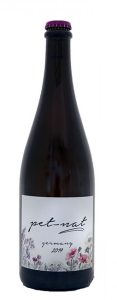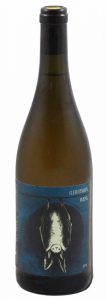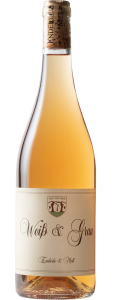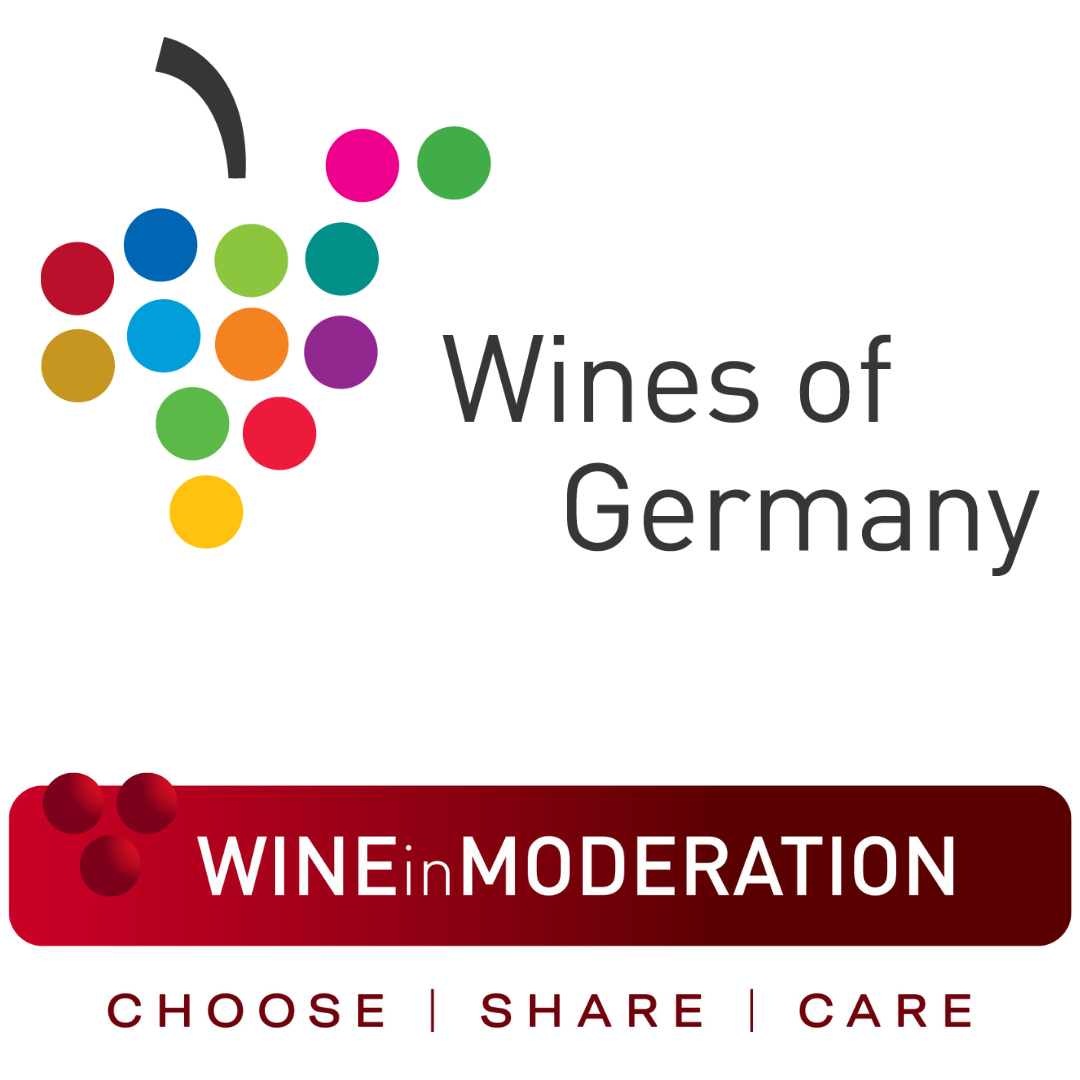Every month, our 5 to Try series showcases five examples of stellar wines from varying wine styles, grapes, and Germany’s 13 winegrowing regions. This month, we dive into the world of German wine blends.
Most wine shops in the U.S. will fill the shelves of their Germany section with Riesling, Pinot Noir, and other mono-varietal selections. So if you come across a German blend, snatch it up quick! Germany primarily specializes in varieties that are well-suited for its cooler climate, and as such the grapes require little intervention on the part of the winemaker to produce breathtaking single-varietal sips. But more and more, these estates that have excelled at creating stellar wines from Riesling, Pinot Noir, Pinot Blanc, Pinot Gris, Lemberger, Silvaner, and others are experimenting with blending these traditional varietals to mix up unforgettable cuvees.
Drink up these 5 exciting examples of German wine blends, each of which is made from a different combination of traditionally grown grapes and from a different official winegrowing region.
 1. Brand Pet-Nat Blanc, Pfalz
1. Brand Pet-Nat Blanc, Pfalz
Pet-Nat Blend of Pinot Blanc (60%) & Silvaner (40%)
Starting off with some sparkling! Pétillant naturel, commonly shortened to pet-nat, is a method of sparkling wine production used all over the world that’s enjoying considerable popularity at the moment. Pet-nat wines are bottled when only partially fermented, and thus fermentation continues in the bottle, which traps the resulting carbon dioxide and produces the bubbles.
Brand’s U.S. importer, Vom Boden, describes German pet-nat as “like those you already know and love from France, but racier, leaner and more bracing…fresher.”
Brothers Daniel (born in 1990) and Jonas (born in 1994) Brand are relatively new to winemaking but quickly made a name for themselves internationally with their youthful exuberance, belief in the future of viticulture, and unique, crystalline natural wines. Their father, Jürgen, was an advocate for environmentally conscious agriculture. However, it wasn’t until Daniel and Jonas took over the estate in 2014 that they fully transitioned to organic viticulture and began experimenting with natural winemaking.
The Pet-Nat Blanc is produced biodynamically with no fining, filtering, or added sulfur. The two white wine grapes used are important players in German wine: Germany is the world’s largest producer of both Silvaner and Pinot Blanc (aka Weissburgunder).
Find near you: Wine-Searcher.com
 2. 2Naturkinder Fledermaus Weiss, Franken
2. 2Naturkinder Fledermaus Weiss, Franken
White Blend of Müller-Thurgau (45%), Silvaner (42%), & Riesling (13%)
This blend of three traditional white varieties comes from an estate dedicated to natural wines. Earlier vintages of the Fledermaus Weiss included just Müller-Thurgau and Silvaner, but the addition of Riesling in the 2018 bottling brings it to a new level.
“Fledermaus” is the German word for bat, while “Weiss” means white. 2NaturKinder also offers a Fledermaus Rot (“red”) and a Pet-Nat called “Bat-Nat.” So what’s with all the bats? The dedication (and cute critter pictured on the label) is perfectly appropriate, as 2Naturkinder uses local bat colonies as a partner in their biodynamic wine production.
Biodiversity is a key priority for 2Naturkinder, and they don’t use chemicals of any kind. In 2014, husband and wife winemakers Melanie Drese and Michael Völker acquired a Müller-Thurgau vineyard with a cottage that seemed like a great home for bats. They worked with a local bat ecologist to install bat boxes in their vineyards and develop methods for procuring guano for the perfect natural fertilizer. In return, they donate a share of the revenue back to the bats via the Landesbund für Vogelschutz (State Federation for Bird Protection), an independent nature conservation association in Bavaria committed to preserving biodiversity, to fund a research project on the role of bats in vineyards.
Find near you: Wine-Searcher.com
 3. Enderle & Moll Weiss & Grau, Baden
3. Enderle & Moll Weiss & Grau, Baden
Orange Blend of Pinot Blanc (60%) and Pinot Gris (40%)
Orange you glad we included this orange wine from iconic producer Enderle & Moll? Orange wines are made from white grapes, but unlike traditional white wine production, they are fermented with skin contact. Therefore, they possess flavors more typical of white wines but with a texture and tannin structure typical of reds.
This aromatic orange wine blend of Germany’s white Pinot varietals, Pinot Blanc (Weissburgunder) and Pinot Gris (Grauburgunder), is fermented for 3-4 weeks on the skins, then pressed and aged in oak.
Sven Enderle and Florian Moll work with old vines, farming all the vineyards organically and biodynamically and bottling all their wines unfined and unfiltered. The estate is acclaimed for their stunning Spätburgunders, but the white and orange wines are not to be missed either. While many wineries are family businesses passed down from generation to generation, Enderle & Moll is the product of two friends who got to know each other while training in winemaking and later decided to found their own small winery in 2007.
Find near you: Wine-Searcher.com
 4. Weingut Schmitt ‘Frei.Körper.Kultur’ Rosé, Rheinhessen
4. Weingut Schmitt ‘Frei.Körper.Kultur’ Rosé, Rheinhessen
Rosé Blend of Portugieser & Dornfelder
This natural wine is as vibrant on the palate as its color!
Dornfelder was bred in Germany in 1955 with the specific intention of creating a blending wine. While it’s blended in this exciting organic rosé, the grape has also been adopted as a producer of distinctive single-varietal wines with aromas of sour cherry, blackberry, and elder, and an unmistakably deep color. Its partner in the Frei.Körper.Kultur Rosé – Portugieser – has unknown origins but was likely brought from Austria to Germany in the 19th century. Medium-bodied and mild in tannins, with aromas of red currant, raspberry, and pepper, the pale red wine is well suited for rosé.
Bianka and Daniel Schmitt farm biodynamically in Rheinhessen, producing a number of natural and minimal-intervention wines from Pet-Nat and white to rosé and red. Their goal is “to create grand wines as naturally as possible that embody the true balance between man and nature – Wines that reflect our personalities as well as our creativity.”
The wines are pure, fresh, and indeed full of personality. “Frei.Körper.Kulture” translates to “Free.Body.Culture.” The line (which also includes a white and a red blend) aims to inspire drinkers to “be brave to be free,” recognize that “we are all of the same kind,” and to “consume with culture,” as written on the label. The red grapes are harvested by hand, undergo a short skin maceration, and are direct pressed. Fermentation occurs spontaneously and the wine is bottled without fining or filtration.
Find near you: Wine-Searcher.com
 5. Beurer Rotgut, Württemberg
5. Beurer Rotgut, Württemberg
Red Blend of Pinot Noir, Dornfelder & Portugieser
The featured red blend of this series also includes Dornfelder and Portugieser, with the addition of Pinot Noir (Spätburgunder), Germany’s most renowned red wine.
Winemaker Jochen Beurer, a former BMX champion, farms organically and biodynamically (Demeter certified) and practices “controlled idleness” – seeking to work with nature and transparently express the vineyards in every bottle. All grapes are harvested carefully by hand and processed gently. All wines are fermented spontaneously with only natural yeast.
Located in Württemberg, where 68% of the vineyard area is dedicated to red varieties, Jochen is celebrated for both his white and red wines, from Riesling and Müller-Thurgau to Lemberger and Zweigelt.
The Rotgut, with a cheeky smiling devil adorning the label, is smooth and medium-bodied. It’s easy to drink and perfect year round, even suitable to be slightly chilled. The name says it all: Rotgut translates to “good red.”
Find near you: Wine-Searcher.com
Don’t forget to tag and follow @GermanWineUSA!
